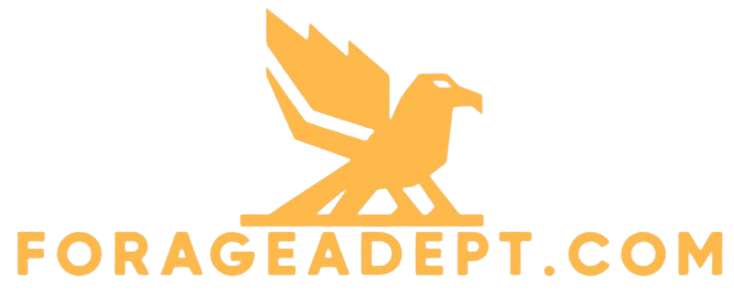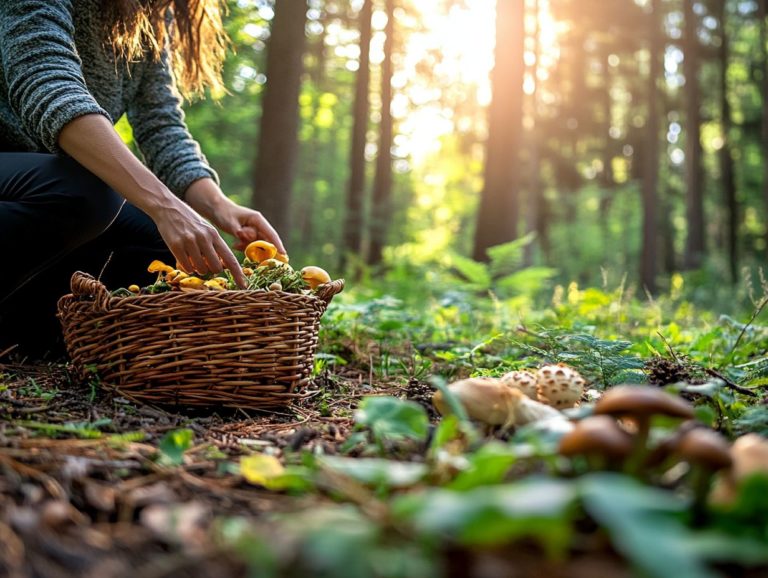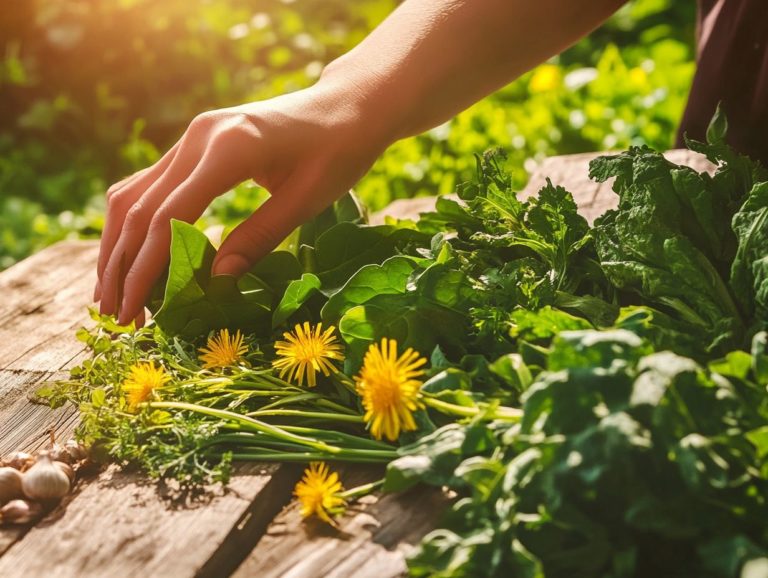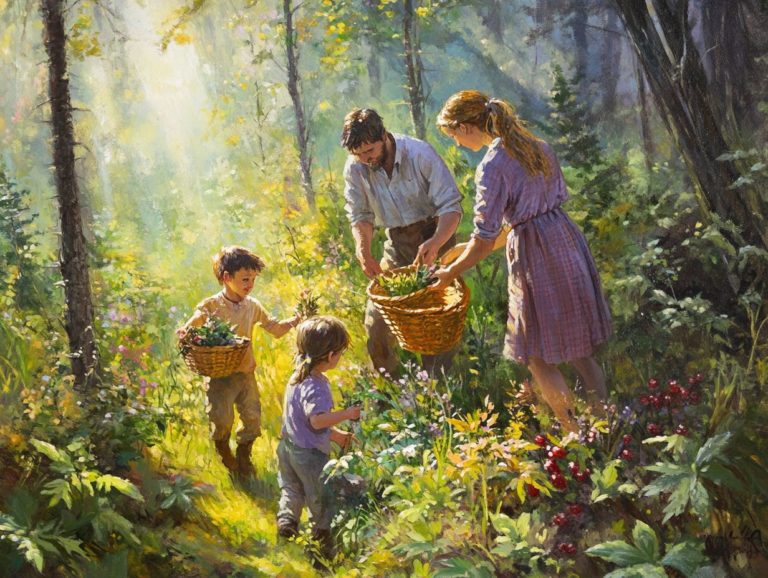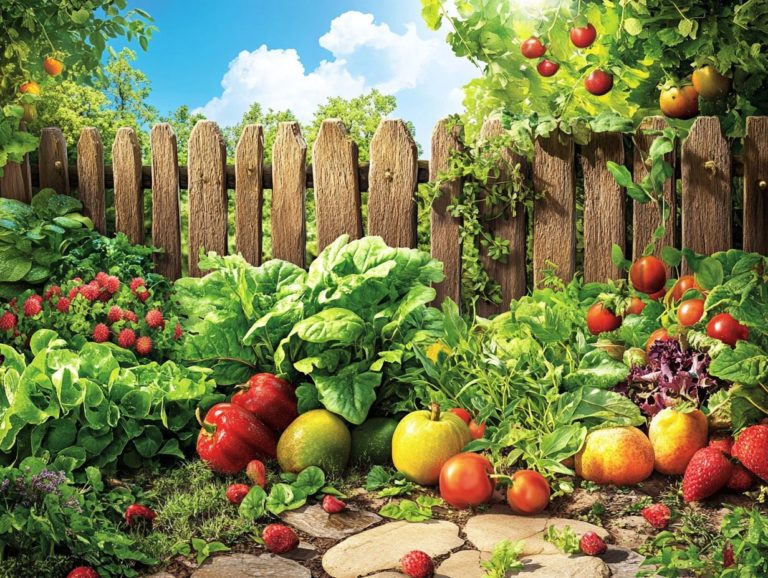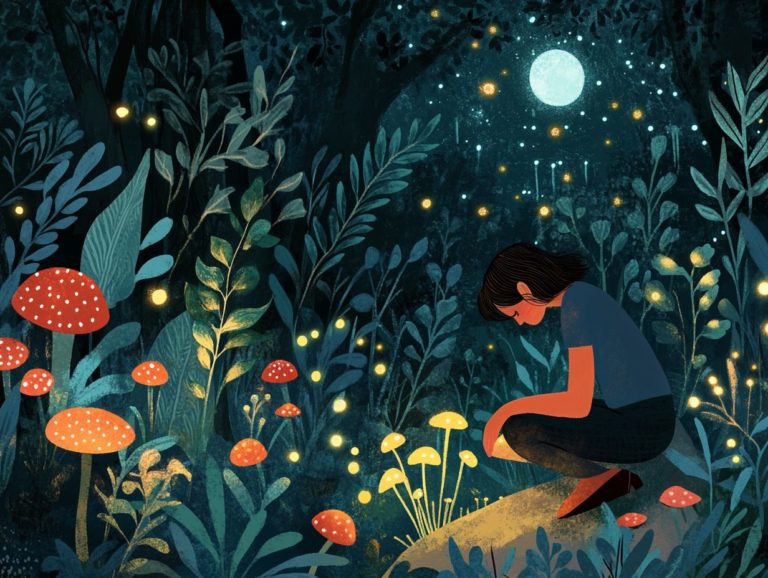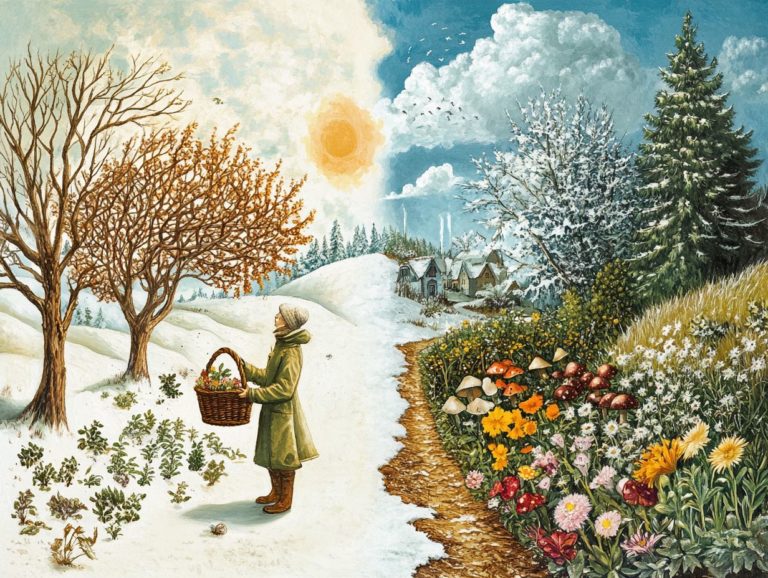How Do I Get Started with Foraging?
Foraging offers a unique opportunity to connect with nature while uncovering the hidden treasures of edible plants thriving all around you. Get ready to explore the myriad benefits of foraging, from enhancing your health to caring for the environment.
In this guide, you’ll find essential safety tips for identifying safe plants, a list of tools that will kickstart your foraging adventures, and expert techniques for skillfully harvesting wild foods. It also emphasizes the importance of ethical foraging practices, ensuring your experience is enjoyable and responsible.
Whether you’re a curious novice or someone looking to deepen your expertise, this guide provides everything you need to embark confidently on your foraging journey.
Contents
Key Takeaways:
Here are some key takeaways to kickstart your foraging journey:
- Start by researching and familiarizing yourself with safe and edible plants in your area.
- Invest in essential gear, such as a foraging basket and a good field guide, to make your foraging trips more successful.
- Practice responsible foraging by following ethical practices like not overharvesting and respecting the natural environment.
What is Foraging?
Foraging is the art of seeking out and gathering wild foods, such as edible plants and mushrooms. This practice is steeped in human history and culture, particularly in regions like North America. If you’re interested in getting started, learning how to plan a foraging trip can significantly enhance your knowledge while helping you connect deeper with the local ecology and environment.
Historically, foraging was vital for the survival of various indigenous communities, where understanding the land and its offerings was crucial. In different cultures, especially in Asia and Europe, foraging has evolved into cherished traditions, often featuring specific techniques and seasonal harvesting of wild foods.
Take Dandelion leaves, for instance they re packed with nutrients. Then there s the Lion s Mane mushroom, celebrated for its cognitive-enhancing properties.
The sweet, rich flavor of wild Persimmons perfectly illustrates how foraging not only provides sustenance but also elevates culinary experiences. By foraging, you connect with your heritage and the ecosystems around you, savoring the authentic flavors of the land.
Benefits of Foraging
Foraging presents a wealth of benefits, from enhancing your health to fostering positive environmental impacts. It s not just a delightful activity; it deepens your connection with nature and champions sustainable living practices, all while giving you access to food at no cost.
Health and Environmental Benefits
Foraging offers impressive health benefits, granting you access to nutrient-rich wild foods that elevate your diet. On the environmental front, foraging supports local ecosystems through sustainable practices that minimize ecological impact.
By incorporating ingredients like blackberries, which are bursting with vitamins C and K, and elderflowers, celebrated for their antioxidants, you can enhance your meals while savoring the rich flavors of nature. This not only boosts your wellness but also deepens your connection to the environment.
Every berry or blossom you harvest enhances your understanding of local biodiversity, encouraging practices that respect the delicate balance of ecosystems. Engaging in foraging can inspire you and your community to care for the environment, ensuring these wild spaces thrive for generations to come.
Foraging Safety
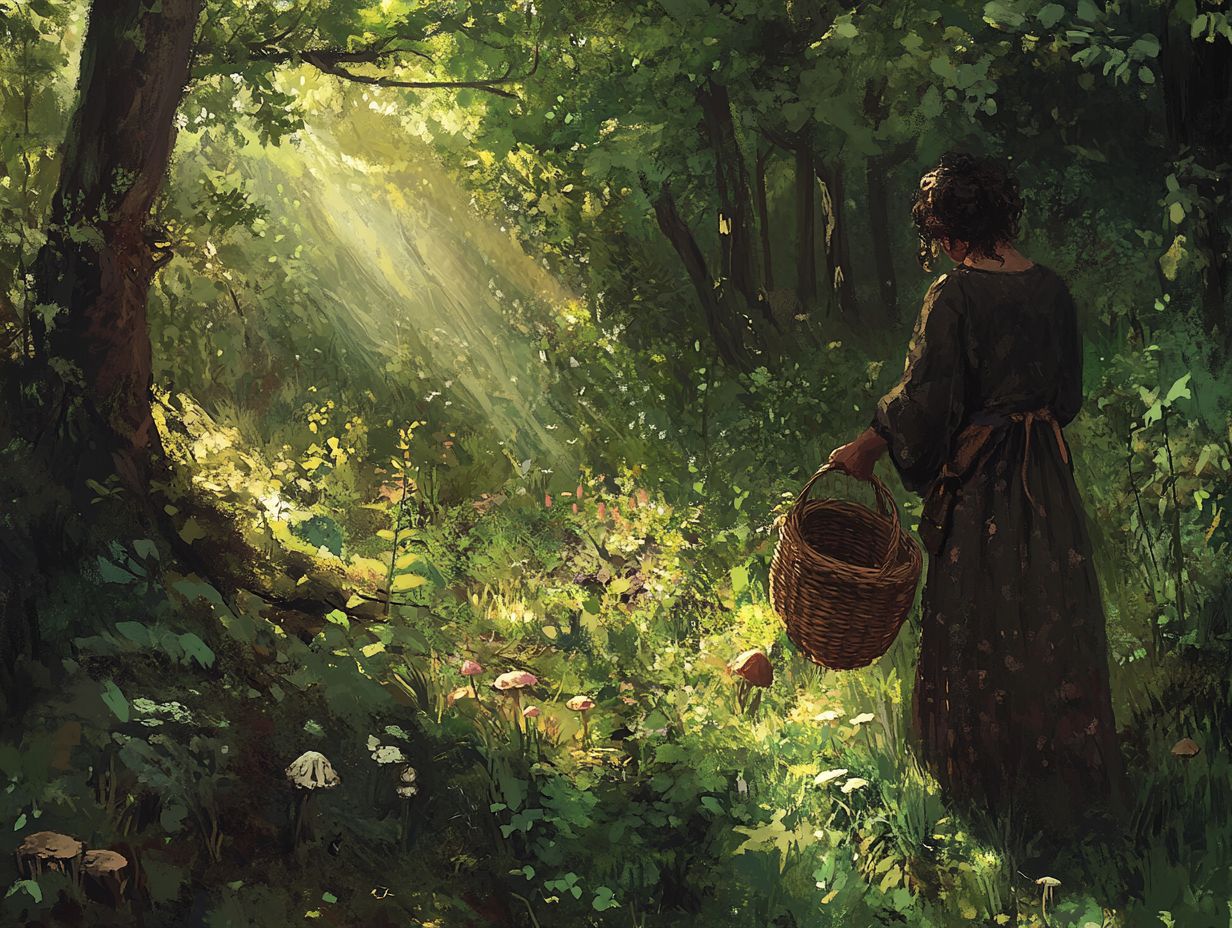
Ensuring foraging safety is crucial for anyone eager to gather wild foods. Learn how to identify safe plants to forage, as this skill allows you to distinguish between edible plants and their poisonous lookalikes.
Consuming the wrong ones can lead to significant health risks, making this knowledge not just beneficial but vital for any forager.
Identifying Safe and Edible Plants
Developing strong identification skills is crucial for you as a forager. This knowledge gives you the power to confidently recognize safe and edible plants.
By honing these skills, you enhance your foraging experience and greatly reduce harmful mistakes. Reliable field guides and mobile apps are invaluable resources, providing detailed images and descriptions of various plant species found in eastern North America.
Attending local foraging workshops or joining a foraging group can further enrich your understanding through hands-on experience and shared insights from fellow enthusiasts. Additionally, knowing what equipment you need for foraging enhances your ability to recognize plants accurately and fosters a deeper appreciation of the rich biodiversity in your region.
Tools and Equipment for Foraging
Equipping yourself with the right tools and equipment is essential for a successful foraging journey. By employing proper harvesting techniques, you enhance your experience while ensuring that nature’s balance is preserved through sustainable practices.
Essential Gear for Successful Foraging
Essential gear for your successful foraging adventures includes a well-equipped toolkit designed to enhance your efficiency and ensure your safety. For more insights, check out how to forage responsibly. Think foraging baskets, reliable knives, and guides tailored to your interests and the local ecology.
Choosing the right tools is vital, as different foraging activities demand specific equipment. For instance, when you re out searching for wild plants, a lightweight hand trowel can be a game-changer, helping you gently uproot delicate roots without harming the surrounding flora. Conversely, if you’re on a mushroom hunt, a sharp, curved knife is critical for making clean cuts, protecting the root system of mushrooms and promoting future growth.
Having a dependable field guide allows you to accurately distinguish between edible and toxic varieties, enriching your personal foraging knowledge. This thoughtful selection of gear not only enhances your experience but also deepens your connection with the natural world around you.
Foraging Techniques and Tips
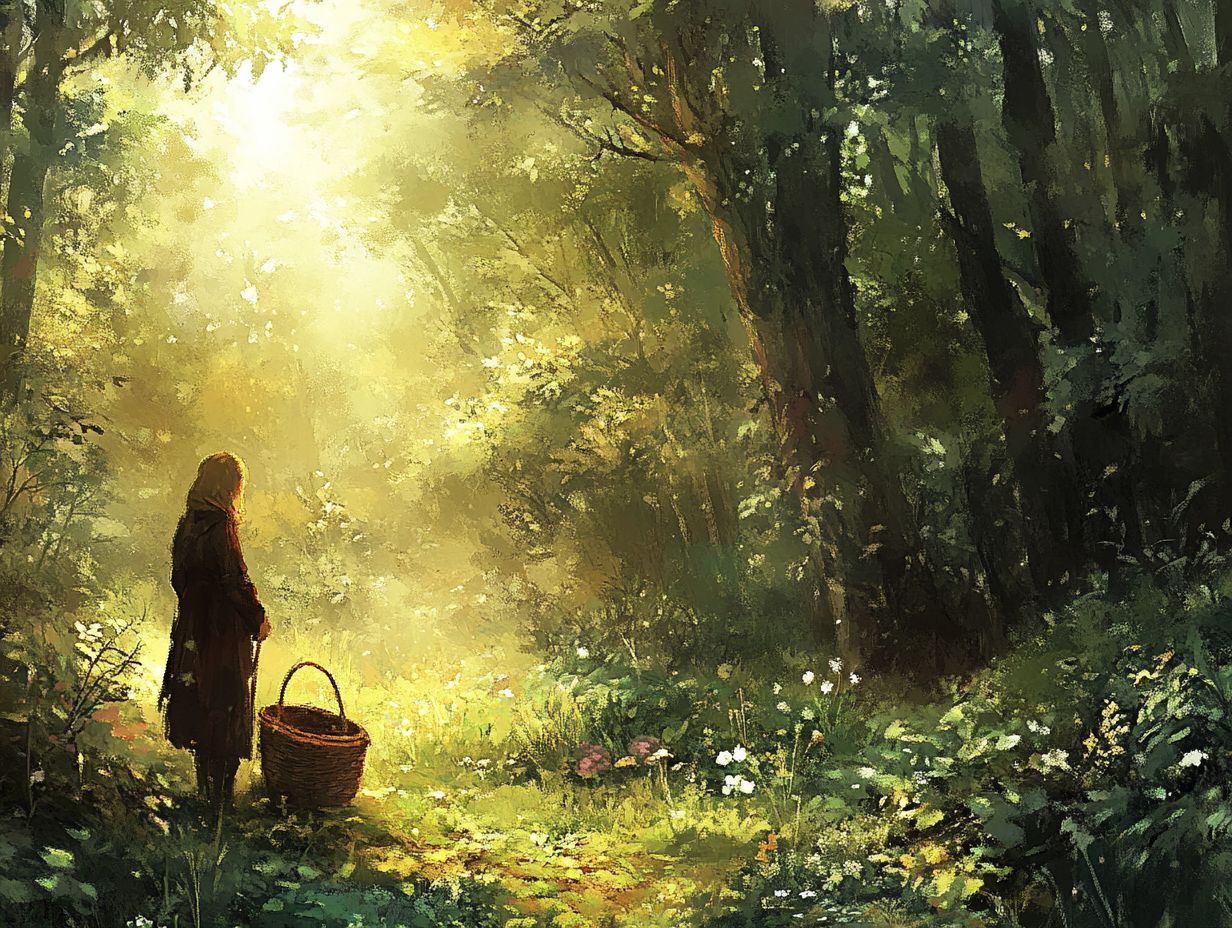
Mastering foraging techniques is essential for anyone who wants to become a skilled forager. To get started, learn how to prepare for a foraging outing. This knowledge empowers you to find and harvest a variety of wild foods responsibly.
Expert Strategies for Finding and Harvesting Wild Foods
Using expert strategies for finding and harvesting wild foods can significantly enhance your foraging experience, especially when you utilize a foraging calendar to align your harvesting times with seasonal availability.
Timing makes all the difference! Knowing the optimal days for gathering ensures a bountiful yield. By understanding the specific environments where certain plants flourish, you can target your efforts more effectively, maximizing your harvest.
Technology is also a key player; various apps can provide real-time data on local flora and fauna, enhancing your ability to pinpoint when and where to forage.
By integrating these practical techniques, you not only sharpen your skills but also deepen your connection with nature, ultimately fostering a more rewarding foraging journey.
Foraging Ethics
Grasping the nuances of foraging ethics is crucial for anyone immersing themselves in the world of wild food gathering. By adopting responsible practices, you can learn how to build your foraging knowledge base, cultivate a sustainable relationship with nature, and remain mindful of the ecological impacts that harvesting can entail.
So, get outside and explore nature’s bounty today!
Responsible Foraging Practices
Responsible foraging practices are vital for sustainable wild food gathering. They help protect local ecology and biodiversity.
Following foraging ethics lets you help preserve the environment.
Be selective when harvesting. Choose only abundant plants to prevent resource depletion.
Know local regulations to stay out of trouble. This also helps you become a better steward of the environment.
By understanding and respecting when plants grow during the year, you foster a respectful relationship with nature. This thoughtful approach benefits your future foraging efforts.
It also enhances biodiversity, contributing to healthier ecosystems that support all forms of wildlife and plant life.
Frequently Asked Questions
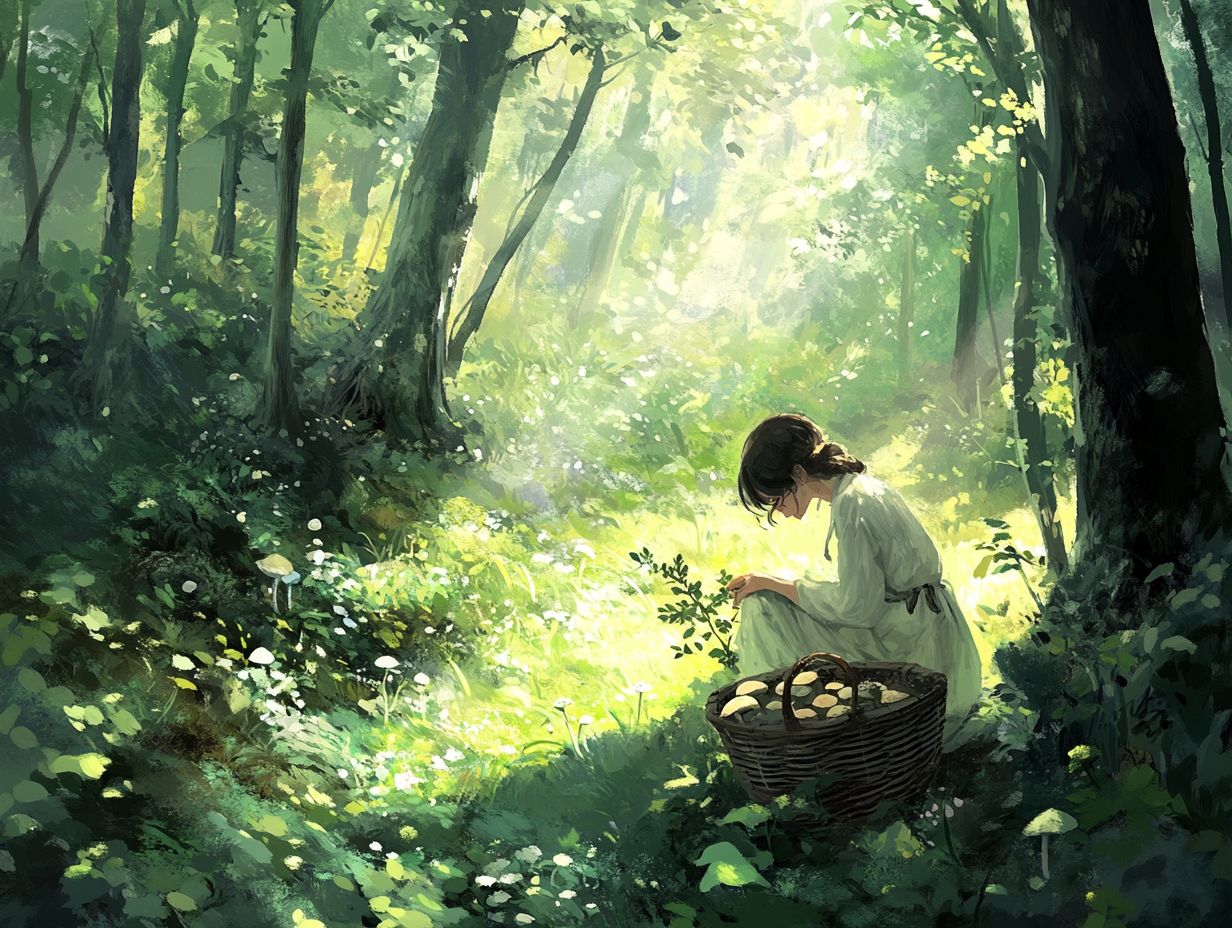
What is foraging?
Foraging is the act of searching for and gathering wild food sources, such as plants, berries, mushrooms, and nuts.
Why should I start foraging?
Foraging can provide a fun and fulfilling way to connect with nature. It is also a sustainable and cost-effective way to source food.
How do I know what is safe to forage?
It is important to research and educate yourself on the types of plants, mushrooms, and other foods that are safe to forage in your area. For those new to this practice, understanding what beginners should know about foraging is crucial. Going with an experienced forager or taking a class can also be helpful.
What tools do I need to get started with foraging?
The only essential tool for foraging is a good field guide for identification. Optional tools include a basket or bag for collecting, gloves, and a knife for harvesting.
Where is the best place to start foraging?
It is best to start foraging in well-established areas, such as parks, nature reserves, and forests. For those new to this practice, learning how to start foraging for wild edibles can ensure a safe and rewarding experience. Avoid foraging in places that may be contaminated by pollution or chemicals.
What is the best time of year to start foraging?
The best time to start foraging depends on your location and the specific plants and foods you are looking for. Generally, spring and summer are good for foraging greens, while fall is great for mushrooms and nuts.
